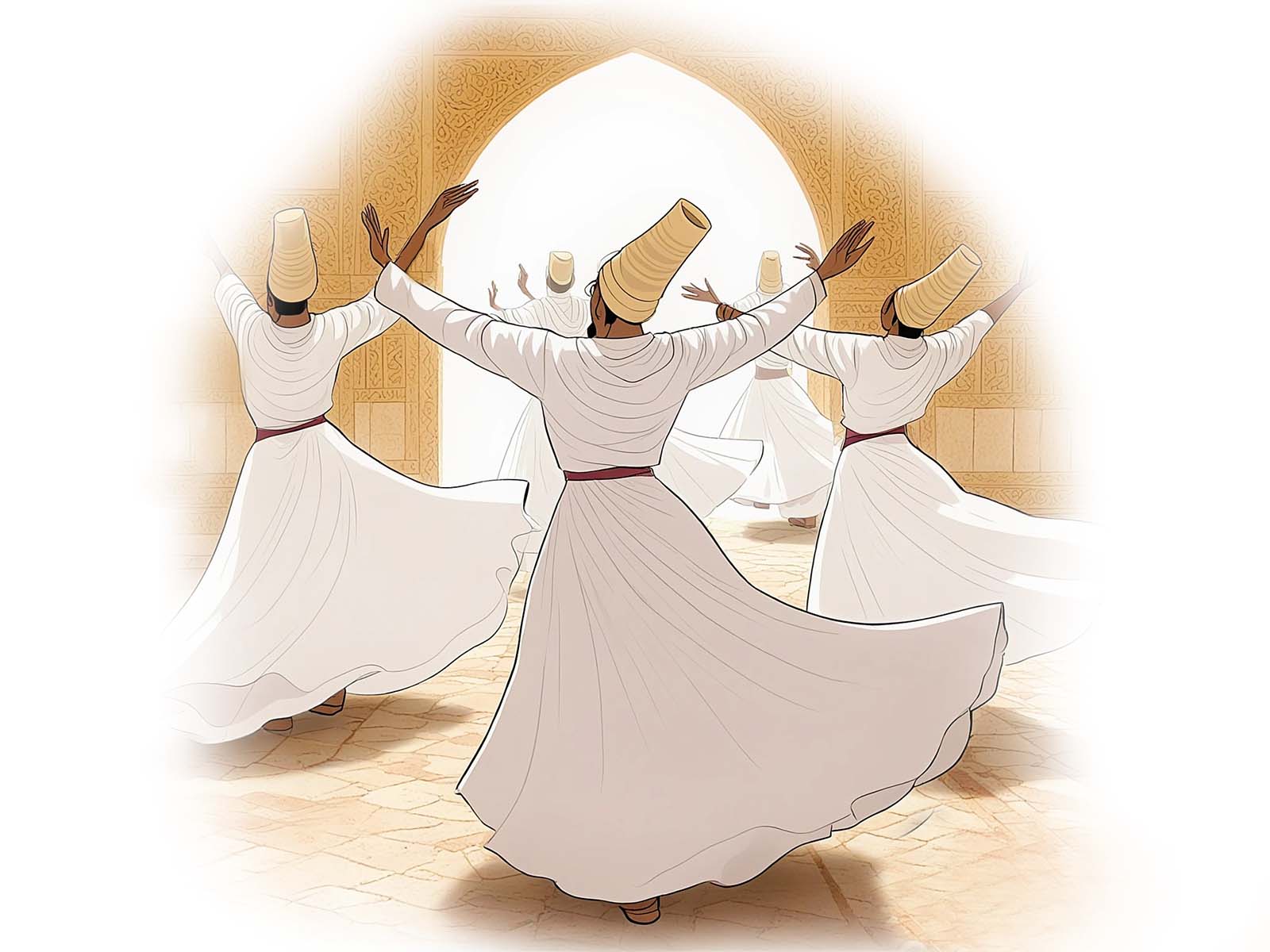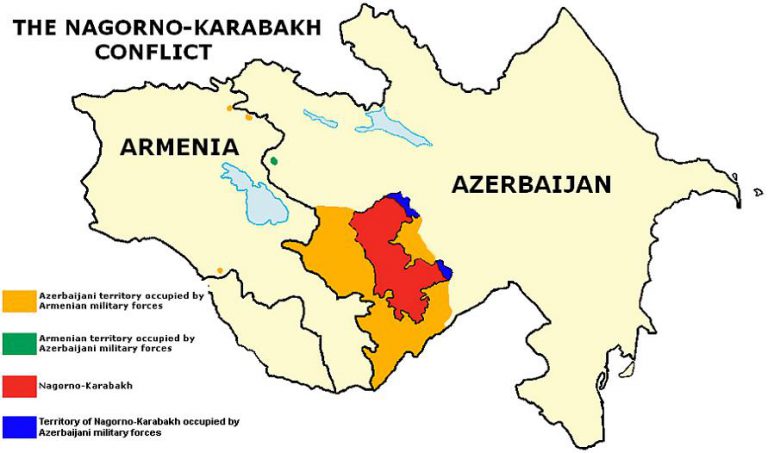Sufis as rebels and the syncretic tradition of medieval India
Simran is a student in St Xavier's College currently pursuing political science Honours. She is currently in her last semester and has a keen interest in International Relations and public policy.
South Asia is one of the most crucial and dynamic areas for Islam since Its population alone is almost 40 per cent of the total Muslim population. The region is placed between the Middle East, Central Asia and South East Asia and the role of the South Asian Muslim is a remarkable one in the modern Muslim renaissance. The original notion suggests that Islam originated in West Asia and spread in South Asia with Quran and the sword. It is seen as something which came from outside the region. However, South Asia is a prominent example of Islam ‘mixing’ and ‘assimilating’ with ‘local cultures’ to create a new form of Islam. Syncretism in the region is evident in culture, language, art, architecture and various other forms. This kind of syncretism is unique to South Asia where various forms of Islam has prevailed with or without royal authority. This kind of syncretism was seen as opposed to the ‘orthodox’ and ‘pure’ form of Islam which brought in criticisms against South Asian Islam as a ‘heterodox’ version of Islam. The ulama’s tendency of ‘guarding orthodoxy’ did not help spread Islam, unlike the Sufis who propagated a liberal form of Islam that did not coerce people into conversions. (Aquil, 2020, #) The South Asian understanding of Islamicization is stereotypical that suggests that all other cultures vanished when Islam took over. However, it is not completely true as newly converted Muslims retained their cultural practices and ethnic identities. But this local culture was disapproved on the grounds of being an ‘inferior form of Islam’ by the orthodox Ulema. The role of the Sufis is central to the rise of this ‘amalgamation’ and syncretism and in the process of ‘Islamicization’. Besides being a cultural force, the Sufis were also a political force in the spread of Islam in the region and setting up a dynastic rule. The Indian subcontinent is therefore an example of Islam developing as a cultural and political project in medieval times. The Sufis have been central to the process of syncretism.
Sufism initially began as a spiritual revolt against worldliness and materialism within the first couple of centuries of the emergence of Islam. The syncretic forces were at work due to this Sufi influence. The Sufis are known for their intense love for the eternal God. The Sufis were tolerant and assimilative and drew people from diverse backgrounds without using force or political power. The Sufis propagated a liberal form of Islam and gave a ‘humane’ face to it unlike the orthodox version of the Ulama. The ability of the Sufis to speak in local idioms and dialects and their perceived paranormal powers attracted followers and connected them with people. The early mystics eventually organized and the movement became institutionalized in silsilas which over time branched into few strands such as the Chishtis, the Naqshbandis, the Qadiris, and the Suhrawardis. Sufis played a significant role in the growth and development of vernacular literature (Urdu, Hindi, Deccani, etc) and contributed to the spread of poetry and music. Syncretism in the region is evident in culture, language, art, architecture and various other forms. For instance, Hindu-Muslim Syncretism in Bijapur under Ibrahim II is reflected in the arts and their extensive Hindu influence on miniature paintings and wall paintings like the extensive use of the lotus motif. (Eaton, 1978, #)
Sufis of various spiritual genealogies started settling down, carving their own ‘sacred geographies’ which were holy places with large numbers of followers, with no demand or pressure to formally convert to Islam. There was no coercion on the part of the Sufis to covert people into Islam but since people were culturally drawn to them, so they converted anyway. The Ulama on the other hand did not succeed in the spread of Islam due to their use of violent and coercive nature of conversions. Their strict adherence to the sharia and tendency of ‘guarding orthodoxy’ did not help spread Islam. (Aquil, 2020, #). The stereotypical understanding of Islamicisztion suggests that all other cultures vanished when Islam took over. However, it is not completely true as newly converted Muslims retained their cultural practices and ethnic identities. Sufism has been instrumental in giving rise to diverse cultural traditions and gave rise to medieval Islamic tradition. But This local culture was disapproved on the grounds of being an ‘inferior form of Islam’ by the orthodox Ulema. The Ulama identified non-Muslims as hostile kafirs and infidels, who were to be eliminated in the most violent manner possible.
We cannot undermine their harmonious nature as they took a rebellious form. Sufi’s were rebellious in the sense that they opposed the rigidity of the Islamic practices and the strict adherence to the Sharia which the Ulama so strongly presented. For instance, the popularity of Sufism also stems from qawwali and related musical genres. The Sufis have in the past fought bitter struggles with the ulama, who contested its legitimacy. For the orthodox guardians of Islam, music was haram, or a forbidden act but for the Sufis, it was one of the most effective and valid ways to remember God and achieve ecstasy. Sufis advocated that it was possible for religions to coexist and prosper and charitable endeavours were better than ritualistic prayers. Even among those Sufis who were ‘puritanical’ in their attitude and ‘uncompromising on questions of adherence to the sharia’, there were examples of general charity and tolerance. (Alam, 2004, #). They shunned ritual and ceremony, they spoke the language of the common people, they gave an impetus to linguistic and cultural assimilation. They believed in union with God and the conception of the union of ‘atma and paramatma’ which was derived from Hinduism. The doctrine of ‘Wahdat-ul-wujud’ (unity of existence) often brought Sufis in conflict with the Islamic orthodoxy of Sunni ulema who asserted that God is unique and such a unity is not thinkable. (Aquil, 2009, #). The Sufis suggested the importance of service to humanity which led to a tolerant and assimilative culture based on multiple faiths which conflicted with Ulama’s idea of Islam. Magic, tolerance and devotional poetry lay at the heart of Sufi practice in India. This explains the appeal of Sufism to the majority Hindu population which was already predisposed to them. (Ahmed, 1988, #)
Besides being a cultural project, it was also a political process yet the Sufis maintained their distance from the political rule. However, closeness with a certain political leader or ruler, for example, Akbar, provided the Sufis with a wider role in politics as they wed the language of warfare with religion. The political use of Sufism showed that Rulers tried to invoke popular religion and spirituality for the legitimation of their power and spiritual leaders have also tended to intervene in matters of politics and governance. Syncretism has helped in the setting up of dynastic rule. Sufi oriented Islam also created a space for diversity and difference under the political rule in times of violence and hatred of the orthodox sect by eroding the hierarchy between man and god. They are essentially seen as a rebellious force conflicting the views of the ‘pure’ Islamists. Sufis were also targeted by the ulama for their occasional indifference to formal religious practices such as regular congregational prayers (namaz / salat), instead of focusing on meditations and spiritual exercises which included music. The Sufi practice of spiritually-oriented Islam is in sharp contrast to political Islam which thrives on violence and terror and has tried to show that Islam is a religion of peace. The spread of Islam gave rise to a new socio-political order in India. Even in times of hatred, the Sufis have spoken the language of love which has made them popular. The Sufi, therefore, became willy-nilly, a rebel figure making the establishment nervous and uneasy.
Bibliography
Ahmed, A. S. (1988). Discovering Islam Making Sense of Muslim History and Society (Revised Edition, 2002). Routledge.
Alam, M. (2004). The Languages of Political Islam India c. 1200-1800 (2010). PERMANENT BLACK.
Aquil, R. (2009). In the name of Allah- understanding Islam and Indian History’, (2009). Penguin.
Aquil, R. (2020). Lovers of God: Sufism and the Politics of Islam in Medieval India. Routledge.
Eaton, R. M. (1978). Sufis of Bijapur, 1300-1700 Social Roles of Sufis in Medieval India (2016). Princeton, New Jersey, Princeton University Press.
Featured Image: SabrangIndia








